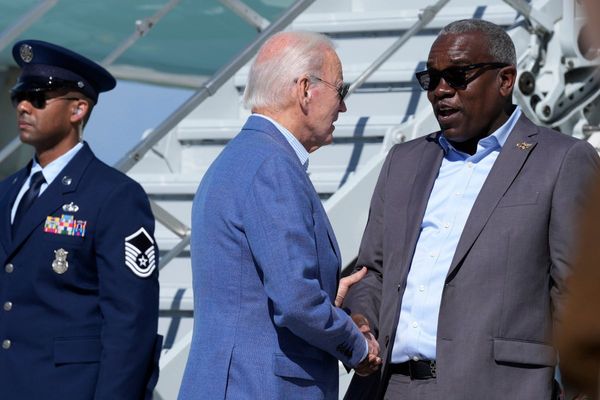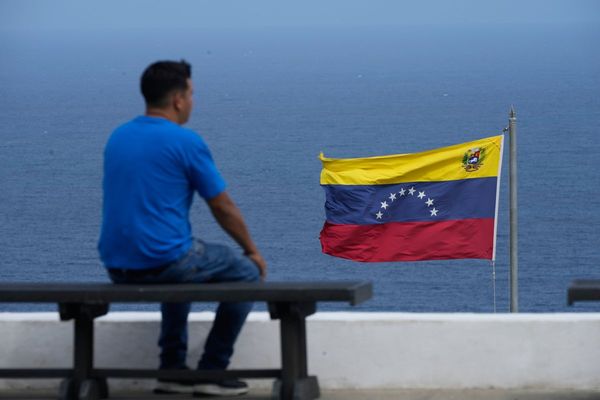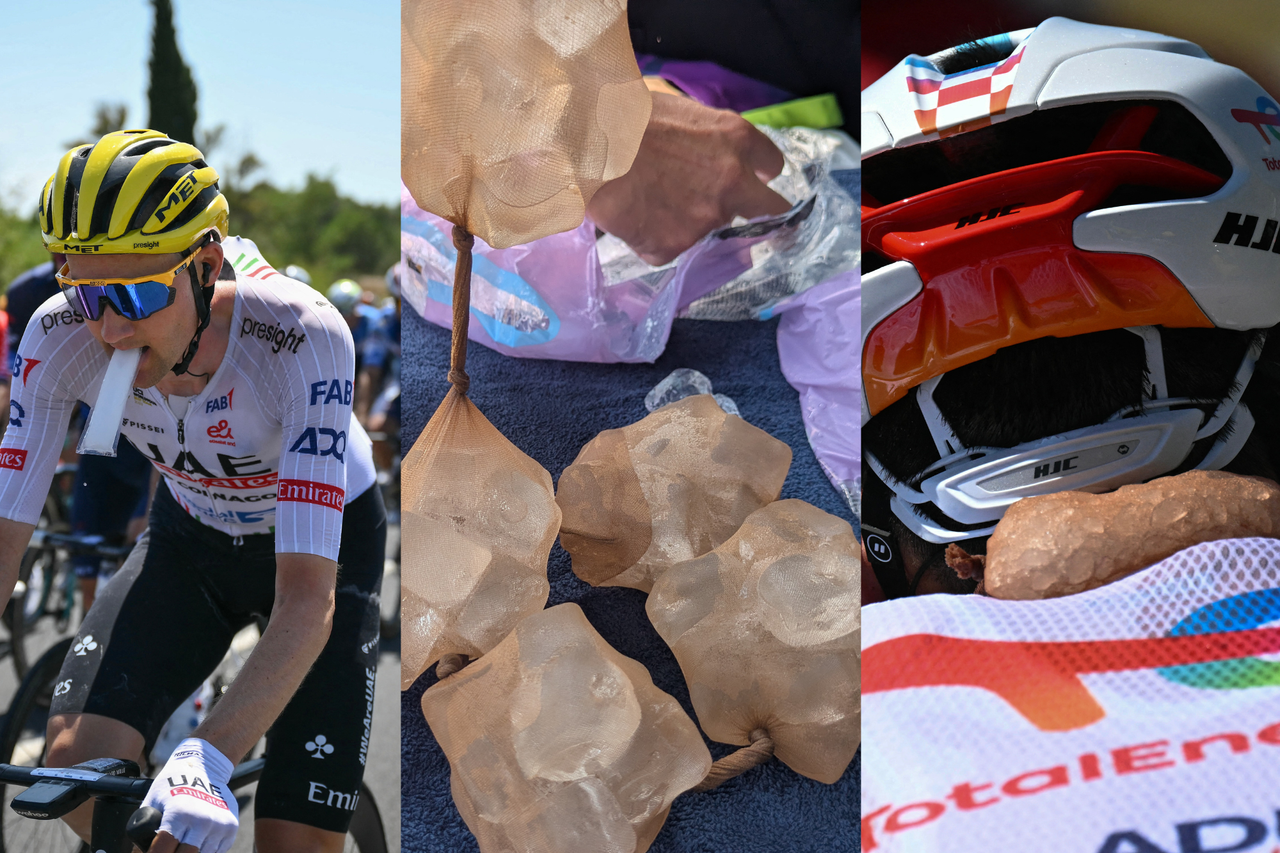
If you happen to find yourself in a French supermarket this July and you bump into a men's cycling team buying dozens of pairs of women’s tights, don’t be too concerned. There is – honestly! – a perfectly reasonable explanation.
Tights are filled with a handful of ice cubes, knots are tied every 20 centimetres, and then they’re cut into their own individual ice packs, ready to be placed under the collars and stuffed down the backs of the 170+ riders racing the Tour de France.
This do-it-yourself hack in the back of an estate car on top of a cool box is all part of WorldTour cycling teams’ elaborate cooling strategies, with ice products just as crucial on hot summer days as high-carb drinks.
On stage nine of the 2025 race, Cycling Weekly spent the day with Dan Guillemette, Jayco AlUla’s head physiotherapist, who is one of many staff members who drives ahead of the race each day to keep riders fuelled, hydrated and cool.
“There are not many other sports where the athletes are spending five or six hours in intense heat and sun so we have to think about heat and sun stroke, and how we can try to mitigate those factors,” says Guillemette. “On stages over 26 degrees, we implement our strategy for keeping the riders cool during the race.”
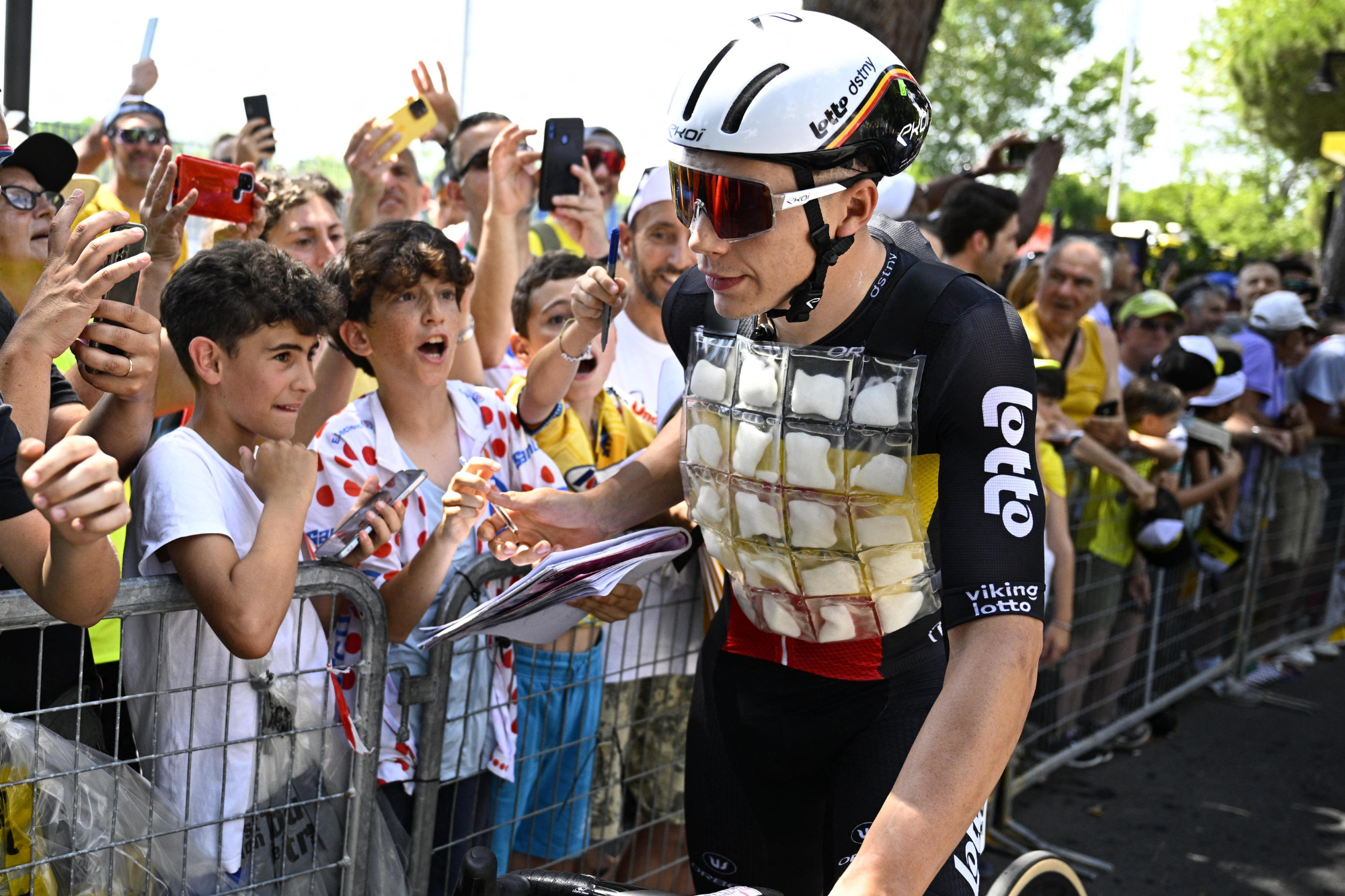
Work to ensure that the body’s temperature doesn't rise much more than 37°C begins as soon as riders wake up. Along their hotel corridors, team nutritionists prepare the day’s food, which include ice gels – often packing in around 30 grams of carbohydrates – and ice slushies.
Once at the start town, riders might don an ice vest – despite evidence to suggest they might not be so useful – or wear a tennis wristband with a couple of ice cubes underneath. “Physiologically the wristbands might not do much, but you can’t counter the sensory input of the brain thinking that it’s cooling the body down,” Guillemette says.
The neck, feet and hands are the most effective places for combating increased heat, and some riders – especially before time trials – have a towel that has been dipped in cold water draped across their necks in the minutes before. “Cold towels are really, really effective,” adds Guillemette.
When the temperatures are particularly hot – and, remember, the Tour has become accustomed to riding in close to 40°C in recent years – teams fill buckets up with a water temperature of between 12 and 14°C. “We’ll do cold water immersion for five to eight minutes where the athlete puts their hand in the water up to their wrist. We know that it really helps and cools the body down massively, and all it is is a simple bucket from Leroy Merlin and cold water,“ Guillemette explains. Riders may repeat the hand-in-the-bucket method before they go to bed, too.
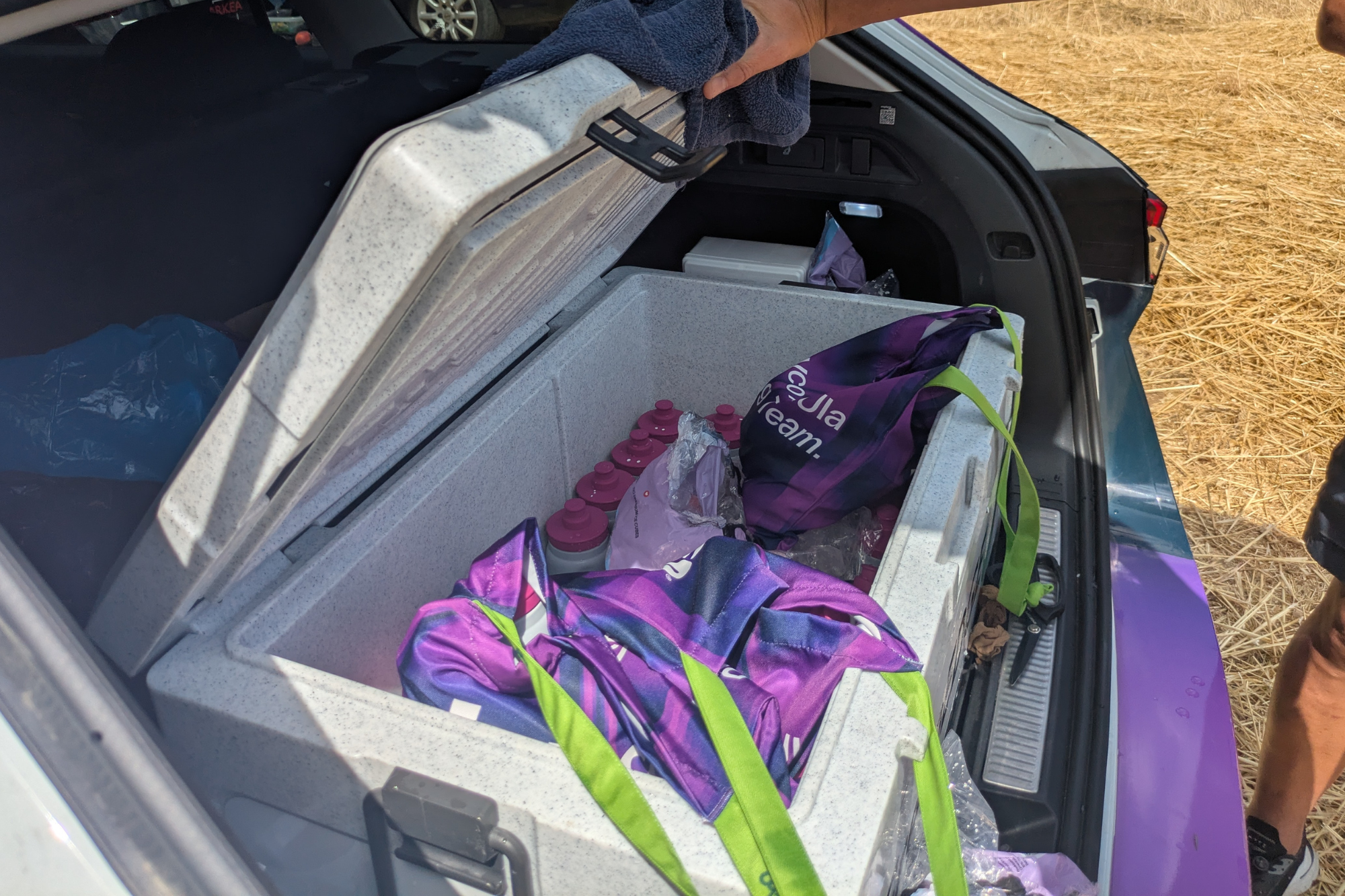
When racing is underway, the next phase is enacted: keeping the riders cool during the sometimes five-plus hours of racing. There are designated feed zones roughly every 40km during the race, and teams can also give out bidons and musettes full of food, drink and ice on every categorised climb.
The two cars of the sports directors that move in and around the peloton each have portable freezers with ice products, as well as food and drink supplies, but so aggressive has the racing been in the opening week of the Tour that riders have been unable to return to said cars as often, thus becoming ever more reliant on feed zone handouts.
Tim Merlier, who won his second stage of the race on stage nine, referenced that fact in his winner’s press conference: “I was a bit overheated and I didn’t get many drinks in the last 80km because we don’t have time to go to the car anymore,” he said. “It was so nervous, and I was a bit overheated.”
Another issue facing teams is the amount of people on the side of the road. “It’s getting difficult to park,” Guillemette says. When CW joined Jayco on a flat route through the Loire region, rival teams were directing each other to available parking spots in lay-bys and fields.
Parked up, that’s where soigneurs and staff like Guillemette unpack tights from their plastic sleeves and then stuff them with ice, ready to be handed out to the approaching riders. Some Jayco AlUla riders even stuff ice cubes down their mitts.
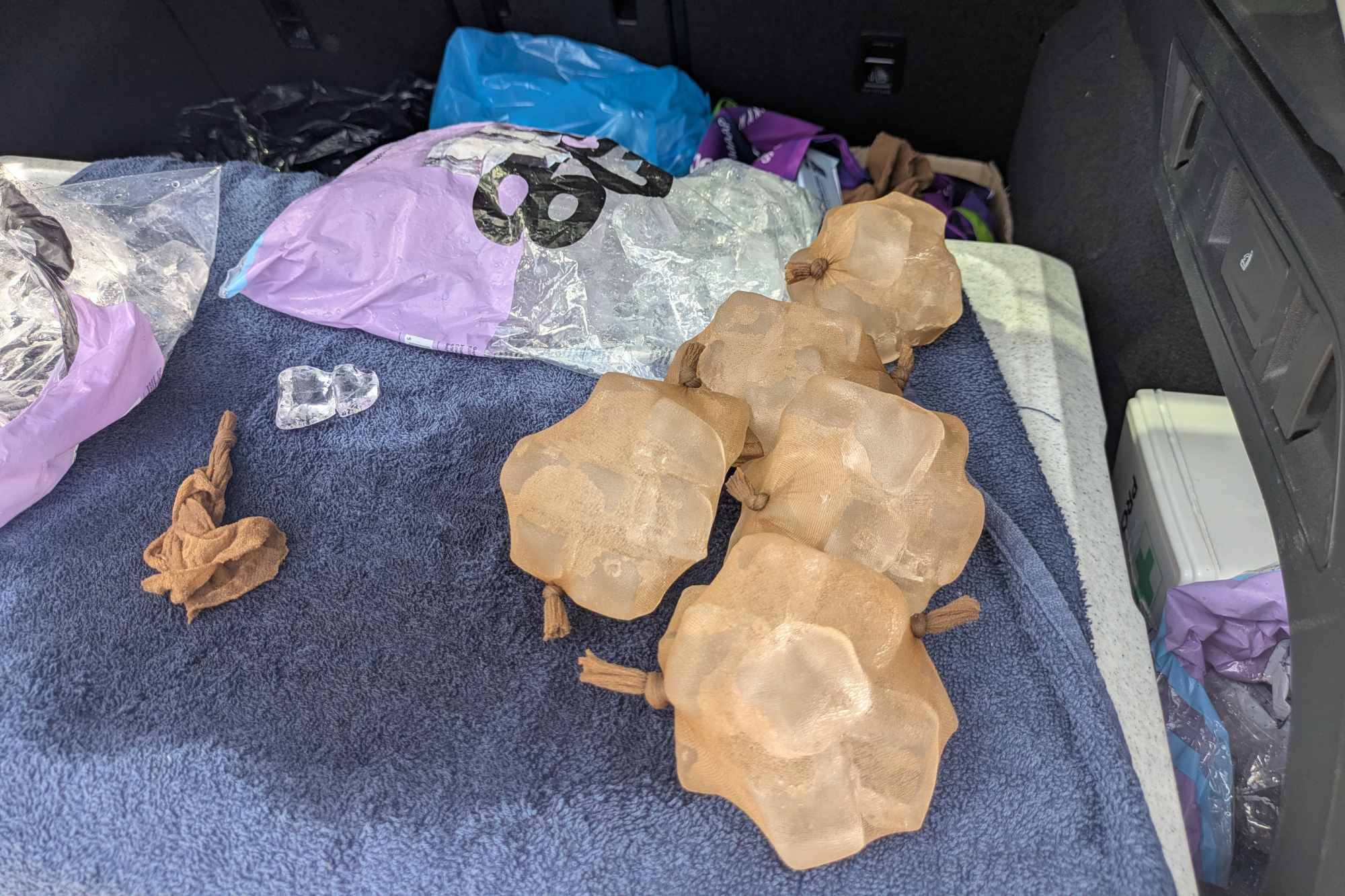
The need for cooling doesn’t stop once the race comes to an end. Some riders take a dip in ice or cold baths – Bahrain Victorious riders have been spotted walking in their team-issued dressing gowns to a nearby ice van to take a plunge – and others use cold compression therapy, which is the method of filling a sleeve with cold water and then wrapping it around the legs. “They can do that on the bus to the hotel, and the cold water applies pressure to the muscle tissue,” Guillemette says.
Cold water immersion will be repeated at the night’s hotel, and then providing that the weather is hot and humid, the cycle starts all over again the next day. “It’s not really rocket science,” Guillemette concludes. “But anything we can do to try and cool the body temperature, we will.”

